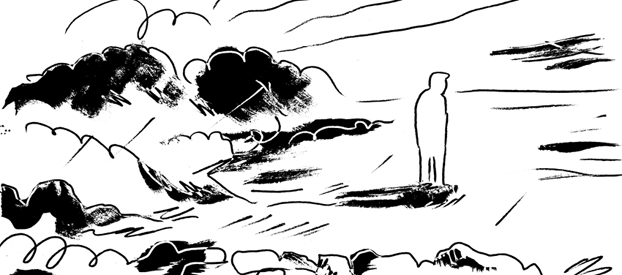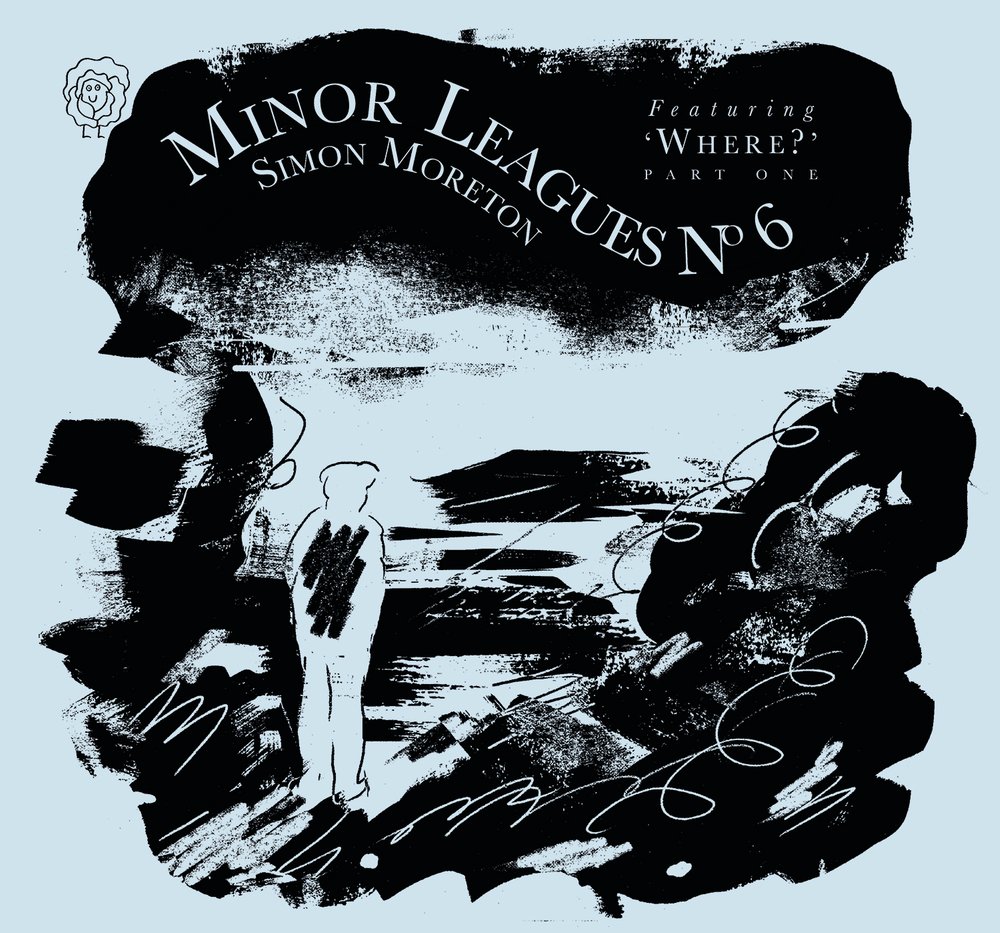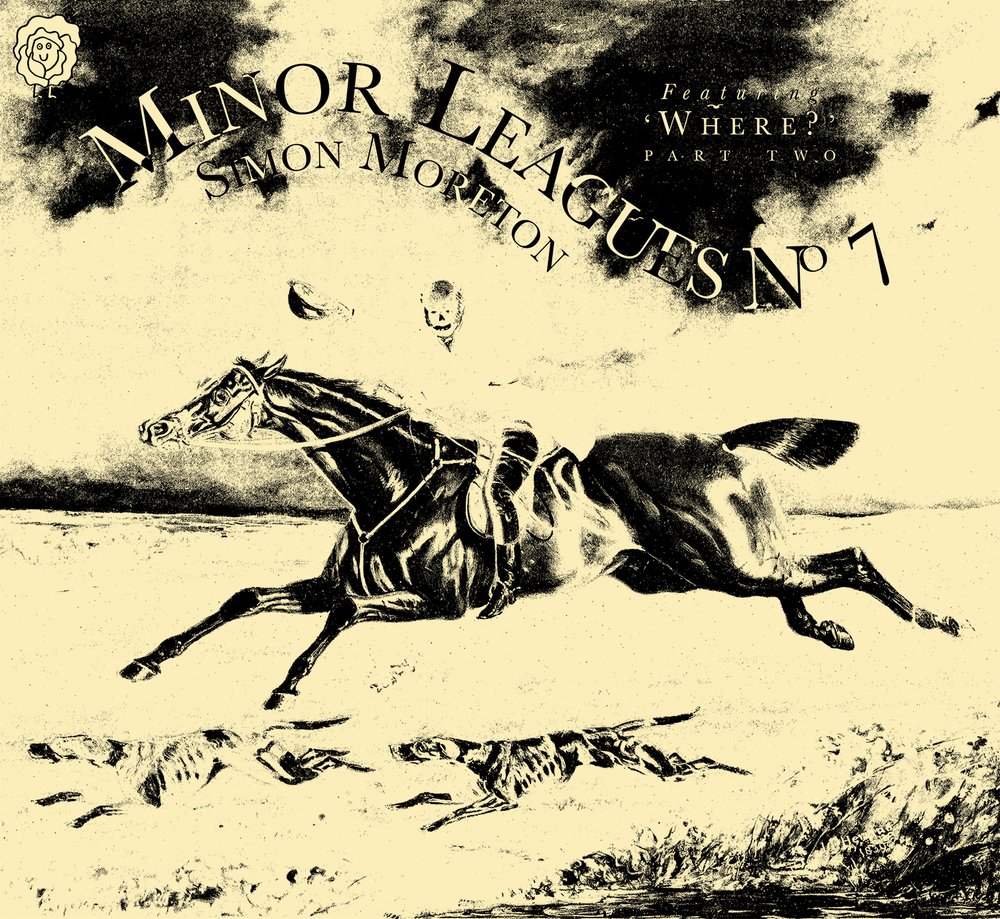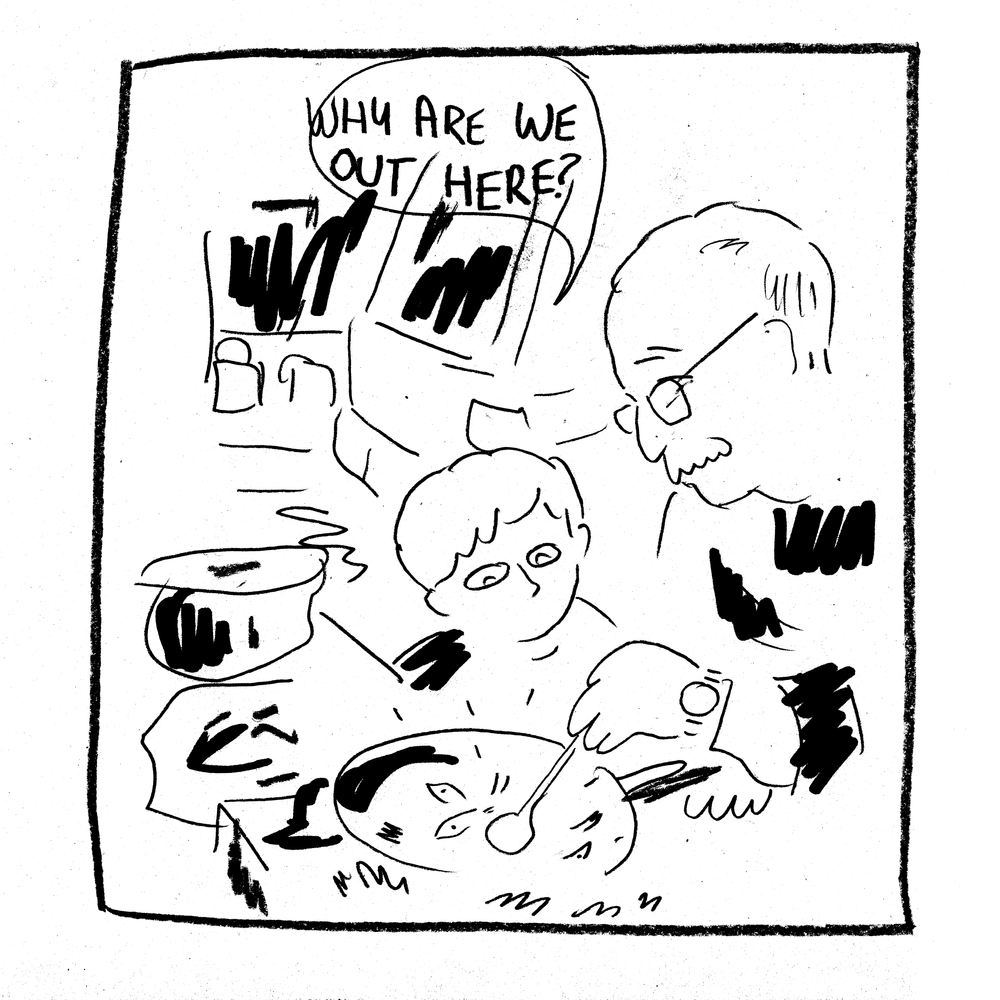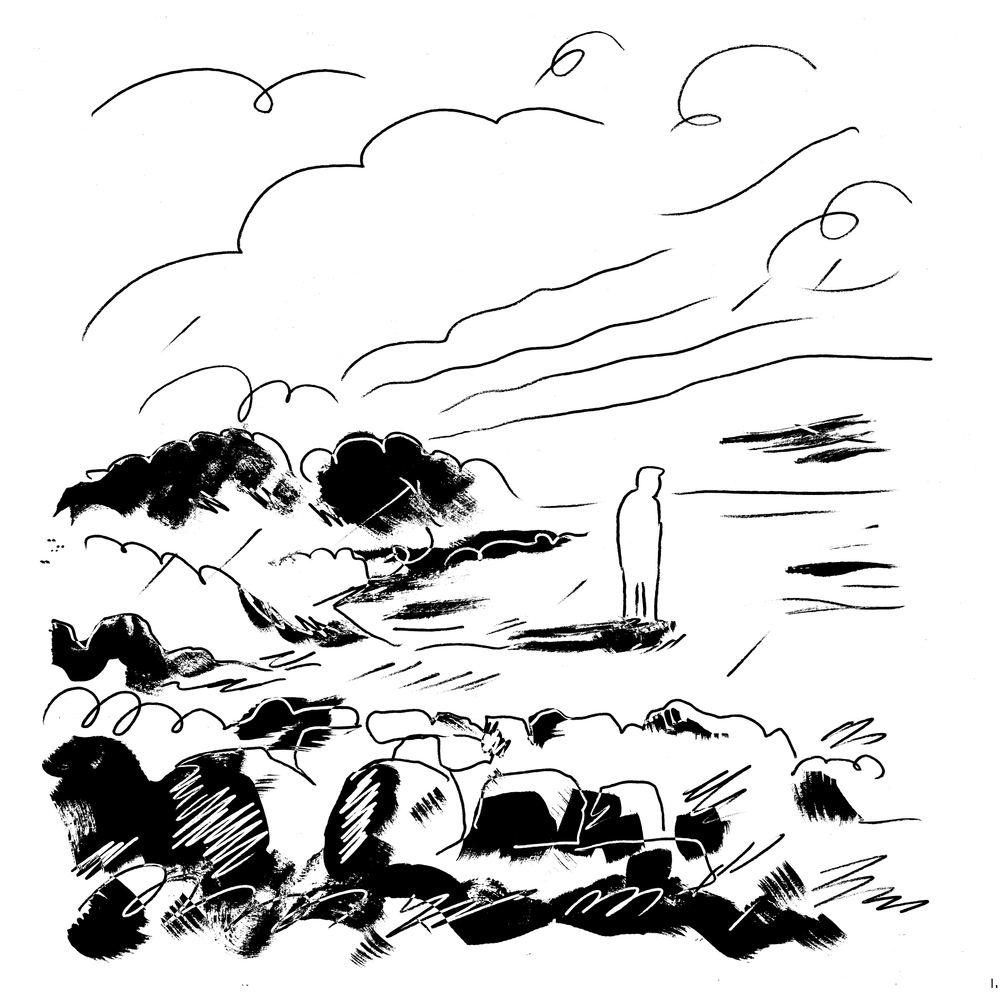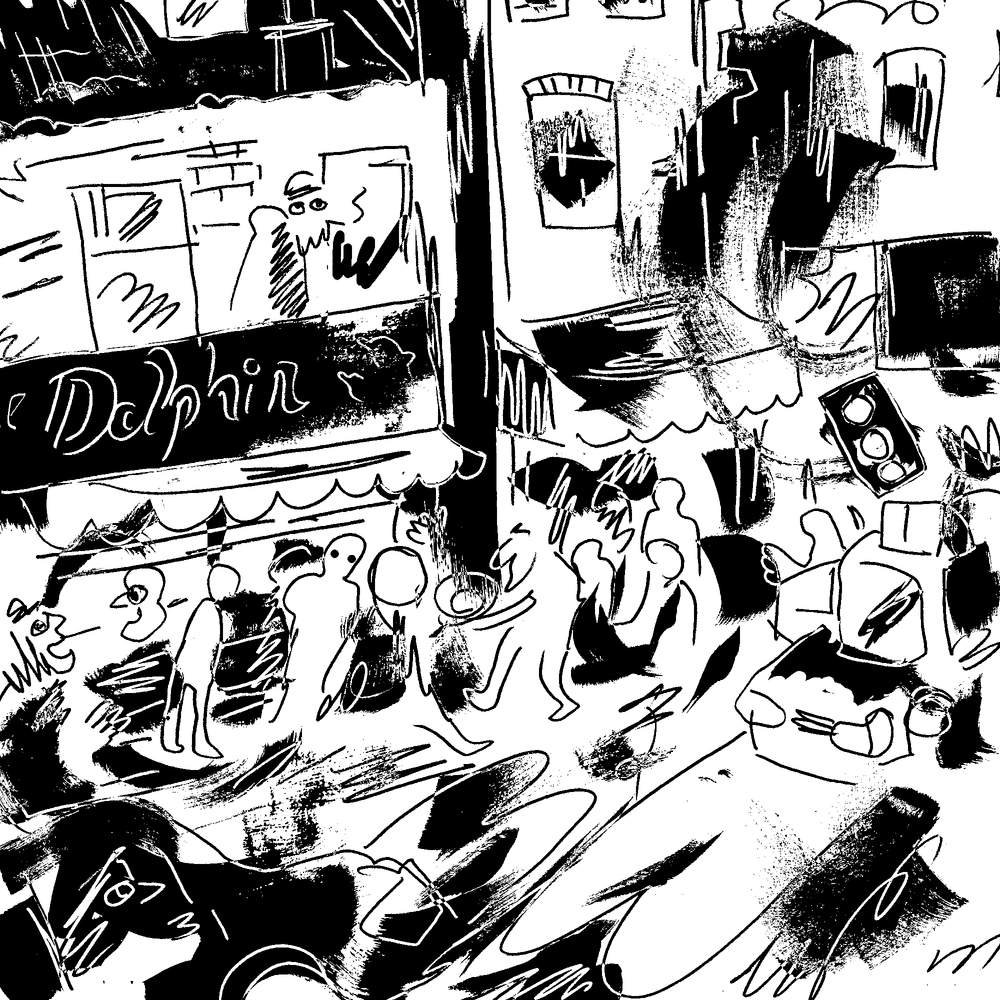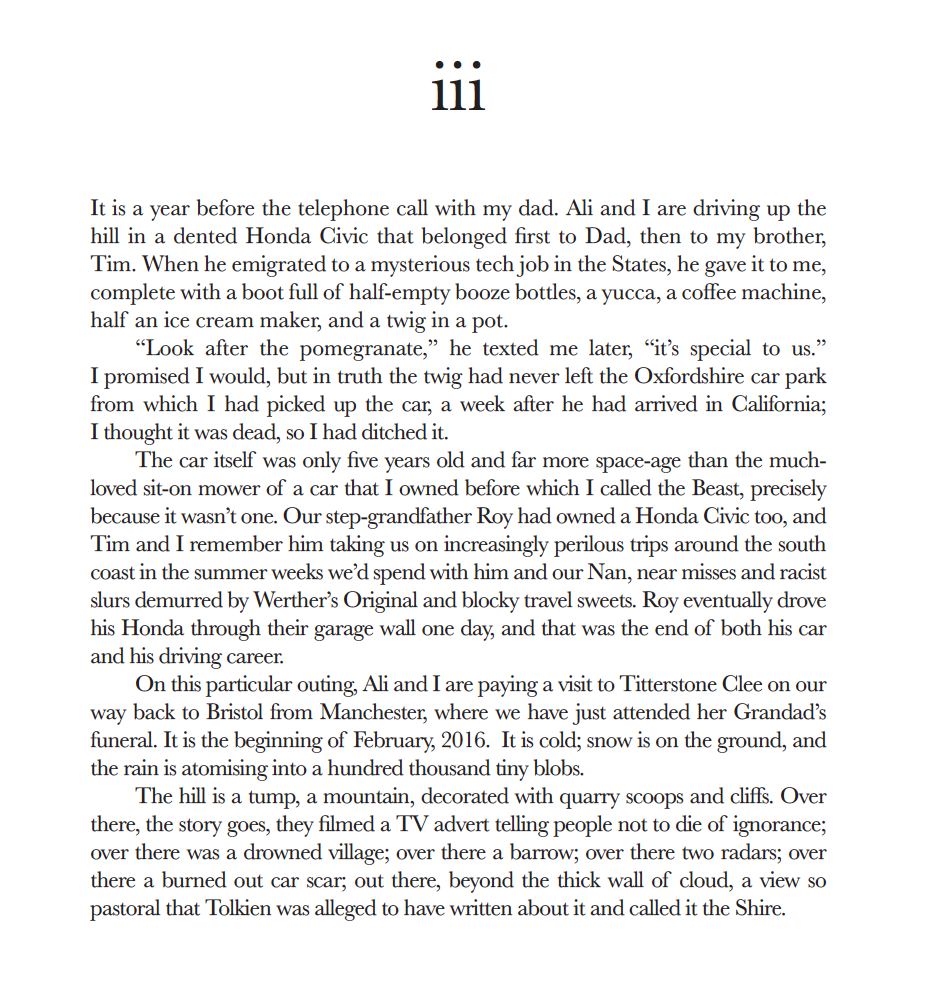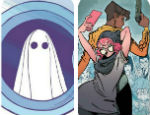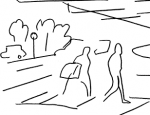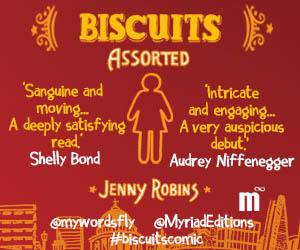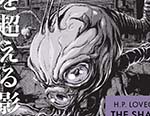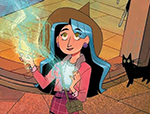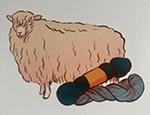Although Simon Moreton’s artistic style has changed dramatically over the ten years or so he has been creating comics and zines, the importance of our environment and the emotional bonds we build with places has long been the core theme of his work. With a poet’s eye and a geographer’s insight, he uses memory, history and emotion as the building blocks for evocative explorations of period and place.
And if you’ve followed the artist’s progression through his Smoo and Minor Leagues series (and other publications), you’ll see his current serialised project, ‘Where?’, as the ambitious culmination of a number of trends in his work.
Minor Leagues #6 and #7 contain the first two parts of a multi-faceted geographical memoir, sadly prompted by the sudden illness and death of the author’s father. Like the other recent issues of the zine, it combines work in various mediums: mostly prose, but also comics, illustration, photography, historical material and found text.
Its focus is the monumental Titterstone Clee Hill in Shropshire, where Moreton’s father worked as an engineer at a radar facility. This period was a formative time for the artist, who depicted his childhood memories of living in the nearby village of Caynham in an issue of Smoo, concluding ‘This place is in my bones’.
In ‘Where?’ Moreton revisits those memories: the work opens with a vivid depiction of a terrifying encounter with a dog from his infancy. However, his fascination with place and the effects of time takes him back further.
Fuelled by extensive research, he digs into the processes that shaped the landscape and the social history of those who inhabited it. The hill’s history ties the radar station into a timeline of technology going back millennia, from an Iron Age hill fort through coal mining, lime production, quarrying and farming to aviation and meteorology. The inhabitants of the area develop their own distinctive dialect and calendar of rituals. He goes back further, into the barely comprehensible depths of geological time, to look at the primeval forces that forged the hill in the first place.
With greater immediacy and admirable clarity, he also relates his family’s experience of his father’s devastating cancer diagnosis. Here Moreton again pulls back the camera to include both the personal and the universal. Looking at the inevitable part that death plays in our lives, he hypothesises that “the event of our own death begins before we are born and carries on for… centuries after our last breath is expelled”.
The Minor Leagues format has allowed Moreton to include more prose in his work, and that moves to centre stage in ‘Where?’. His writing is evocative, powerful and perceptive; the fitter who comes to assemble a hospital bed at his parents’ house is a “large, full boy, of kind dry humour and computer gamer eyes”. Moreton weaves the personal, the geographical and the anthropological with skill, while his more poetic flourishes generally pull up short of preciousness or self-indulgence. He uses his research well, unearthing and polishing little nuggets of history or folklore to highlight the sense of place.
Style also plays a part in the graphic parts of the work. Long-time readers of Smoo might remember how Moreton pared down his art style to a very clean, fluid minimalism. Here things continue their swing back towards something altogether more smudgy and expressionistic, perhaps reflecting the outsized feeling of childhood experiences and the gradual degradation of memories.
The whole thing comes in an almost-square format that fits the material nicely; it provides a versatile space for both the prose and the more visual elements. And with its creator an active and vocal exponent of the DIY ethic, the zine’s resolutely home-made feel heightens the sense of the work’s personal nature.
As a creator and facilitator, Simon Moreton has long been one of the truest voices in the small-press world. At what looks like the half-way stage, ‘Where?’ is shaping up to be a crowning achievement.
Simon Moreton (W/A) • £6/5/4 each issue (choose-what-you-can-afford pricing)
Review by Tom Murphy





